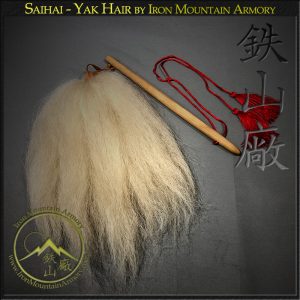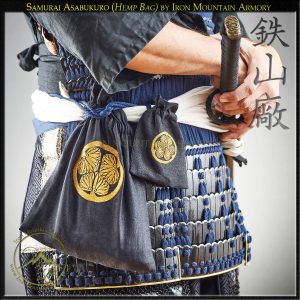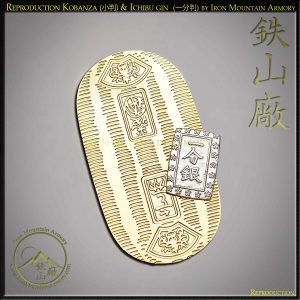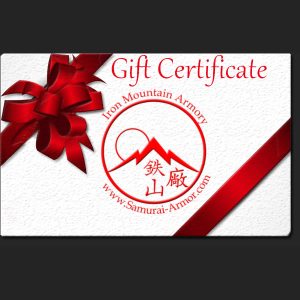- Traditionally Handcrafted
- Customizable
- Shipped Direct From The Armory
- Best Price Guarantee
- World wide delivery
Ya (矢, samurai arrow) commonly refers to the arrows used by Samurai during the Feudal era of Japan. Samurai used the yumi bow as their primary weapon and created their own unique form of battlefield archery called Koshiya Kumiyumi. Kyudo (Way of the Bow) was formed during the peaceful Edo era and is known as a “modern” Japanese archery, and call their arrows “Boya“. To avoid confusion, we will use more traditional words, like “ya” relating more to the era of Feudal Samurai warriors who practiced Koshiya Kumiyumi. There are 2 types of arrows used by samurai warriors and in which we offer. The “Matoya” which is a training arrow with a 5~7mm thick shaft and “Seiya” a combat arrow with a 8~10mm thick shaft. The yajiri or yanone (Japanese arrowhead) for the seiya also features a longer / wider tang (tail). It is said that a samurai might carry a kari-ebira (quiver) with up to 26 ya.
Both the matoya and seiya come in 2 different options, makiwara-ya (unfletched) and kazuya (fletched). Traditionally the hane (feathers) for the kazuya are from large birds of prey (hawks, eagles, etc). However, in modern times, many of these birds are considered endangered species and can no longer be used. Iron Mountain Armory offers the options of owl (Natural or Dyed), turkey or goose feathers. All humanly collected.
The arrow length is determent by the warrior’s draw and the feather length is determined by the arrow’s length. To determine your arrow’s length, measure from the center of the throat to the tip of the middle finger of the outstretched left arm plus three fingers widths (~5cm). Please note shaft length option is without arrowhead. Please reference the arrow head length in the bottom right corner of the picture or select the length of your arrow head using the Advanced Arrow Options. We will be happy to craft your ya and yajiri to your personal needs.
The yajiri or yanone (Japanese arrowhead) come in many different shapes, sizes and designs. All meant for different purposes and the details and names can get quite confusing. (For more details for any of our products, please review the references located at the bottom of each product page.) Most yanone have names given in relation to their function or shapes. These include such names as: Dragon’s Tongue, Fish head, Crab’s Claw, Rope Cutter, Bamboo Leaf, Boars Head, Flesh Terror, Chisel, Whistle, and Barbed, just to name a few. In general there are 6 common styles of yanone which we offer.
If you would like something more custom, please email us with your design request for a custom quote.
Keeping with traditional arrow crafting, Iron Mountain Armory uses a special hand selected bamboo, harvested in season at about 32 months old. The bamboo goes through a traditional process of cleaning, shaping, drying, fire hardening and lacquering to create a very durable bamboo shaft. The yajiri (arrowhead) are traditionally hand forged, optional folded, hand hammered into shape and clay temper hardened. The “self-nock” and yajiri (arrowhead) and hante (feathers) are both reinforced with strong silk thread and hemp cords, which are secured with traditional glue made from yak bone and then lacquered to protect it from the elements. The finished product is an authentic, modern reproduction of a samurai arrow. (see video linked below).
We offer many options to accommodate the needs of all of our clients. If you need a custom crafted yajiri (traditional Japanese arrow-head) or ya (traditional samurai arrow) or have any questions about the items, options or details, please Contact Us via our online form or by clicking the “Contact Detail” box in the top right hand corner of this page to reveal our phone number and email address.
Features:
Our traditional ya and yajiri are both handcrafted at the time of your order by Iron Mountain Armory. Please allow at least 2 to 3 months for crafting. Your order may need to be sent via SAL, which can take an extra 2 to 4 weeks for delivery. These are very unique, one of a kind items and well worth the wait for anyone wanting to own a true replica of a samurai arrow. Please note that these are fully functional arrows with bird feathers. It is clients responsibility to check all local and government laws before ordering. Iron Mountain Armory takes no responsibilities for any custom, legal or other issues with the purchase or use of this product. All items are handmade from natural materials and may vary in size, look and other details.
[table id=PF /]
References:
“Japanese Polearms“, by Ronald M Knutsen, pp232-247, The Holland Press, 1963
“A Glossary of the Construction, Decoration and Use of Arms and Armor“, by George Cameron Stone, pp670, pp673, pp674, The Southworth Press, 1934
“Japanese Arms & Armor”, by H. Russel Robinson, plates IX, XXVII, XXVIII, 107,108,109, Crown Publishers, 1969
“Bows, Arrows & Quivers of Ancient Japan“, A reprint of a Volume from the SHUKO JISSHU, orignally printed 1700, ISBN 0-910704-91-0, Hawley Publications, 1994
“Arms & Armour of Old Japan“, by B. W. Robinson, plate 23, Victoria & Albert Museum, 1951, 1977, ISBN 0-11-290074-7
“YaNoNe Arrowheads“, by Robert Benson, Bushido, Vol. 2 No. 1pp, July 1980, pp5-10
“Japanese Crafts, Materials and their Applications“, Edited by B. Hickman, Reprints from the Japan Society London, pp169-219
“Arms and Armor of the Samurai, The history of weaponry in Ancient Japan“, by I Bottomley & A P Hopson, pp26-28, Saturn Books Ltd., 1996, ISBN 0-517-10318-4
“Dictionary of Japanese Fighting Armory“, by Yoshihiko Sasama, pp12-87, 1999, ISBN 4-7601-1705-9



